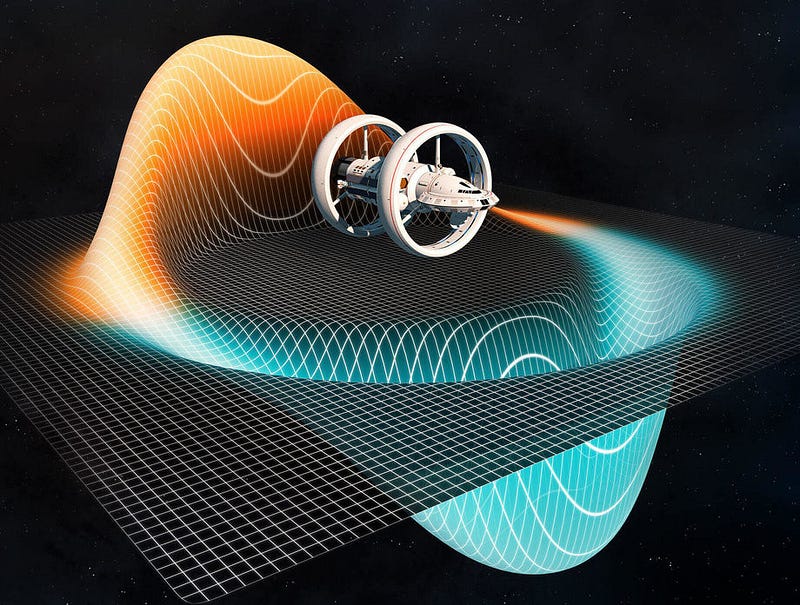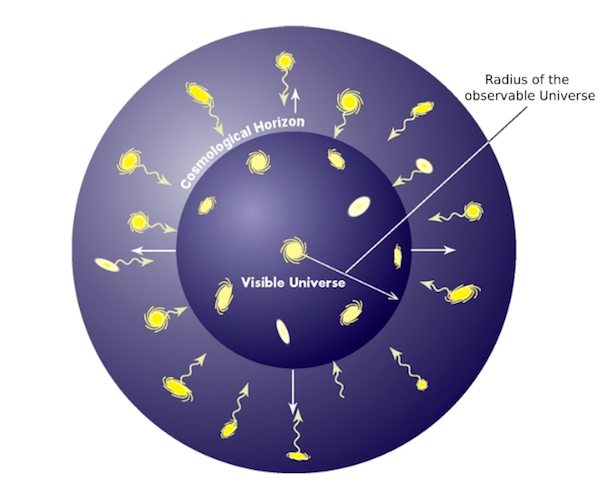Exploring the Concept of Warp Drives: Science and Philosophy
Written on
Chapter 1: Theoretical Foundations of Warp Drives
What if Warp Drives were not just a figment of imagination? Given the laws of physics, particularly General Relativity, it’s plausible to think that they might be achievable. For the sake of this discussion, let’s presume that developing a warp drive is merely an engineering challenge that future civilizations could overcome, and contemplate the consequences of such an advancement.
The Alcubierre Warp Drive proposes a method of bending spacetime rather than traveling through it. This concept is reminiscent of the scenarios depicted in Star Trek. There exists a plethora of scientific literature, articles, and YouTube videos that delve into the topic of warp drives, leaving it to the interested reader to explore further.

1. Traveling One Light-Minute
Let’s begin by imagining a spacecraft utilizing this warp drive to travel a short distance—just one light-minute away. What would this journey entail?
After the ship completes its transit, you would look in the direction where it was expected to be located, assuming it has radio beacons to enhance visibility. Precisely one minute later, the ship would come into view, as that is the duration light takes to reach you.
However, if we extend this thought experiment to a distance of one billion light-years, the complexities multiply. For instance, if the ship were to return to its starting point before a minute had elapsed, you would see it appear closer than anticipated, observing it as it was “earlier.”
Note: An earlier statement was misleading: rather than seeing the ship as it was one light-minute ago, it should be clarified that you're seeing the ship as it was one minute ago when it was one light-minute away. This approximation could be refined further, considering factors like space expansion and any mass that might affect the path of light.
2. The Cosmological Horizon and the Type 1 Multiverse
The farthest observable distance with an infinitely powerful telescope is roughly 46.5 billion light-years, marking half of the cosmological horizon. This distance reflects how much the universe has expanded over approximately 13.77 billion years since the Big Bang, factoring in inflation and the universe's accelerating expansion.
Attempting to reach this distance at light speed would be futile, as the space between would continue to expand faster than one could traverse it. However, warp drives, which are not limited by light speed constraints, would allow access to regions beyond our observational capabilities.
Theoretical models suggest that a vast expanse of space—including energy and matter—exists beyond our observable universe. This potentially infinite volume could provide opportunities for future civilizations to explore realms beyond our current understanding.

3. The Non-Local Nature of Reality
Nature operates on principles of non-locality. Quantum entanglement illustrates this phenomenon, suggesting that two entangled particles form a single irreducible entity, regardless of the distance separating them. This idea prompts us to ponder whether such connections could extend beyond our visible cosmological horizon.
Moreover, if a warp drive could facilitate the transportation of conserved quantities—such as energy and quantum numbers—what implications would this have for our understanding of conservation laws?
Consider the concept of entropy: it generally increases in the universe, yet life appears to decrease entropy within a defined boundary. What if we could establish a "Super-Cosmological Horizon Heat Sink" that would transport entropy away from us into regions forever separated in spacetime? This could redefine our notions of local and global entropies, necessitating a reevaluation of conservation laws as we understand them.
These reflections evoke a deep sense of curiosity and wonder, reminiscent of the motivations that originally drew me to physics. I’ve come to realize that my true interests might lie in the Philosophy of Physics or Metaphysics, rather than in Physics itself—a revelation that sheds light on my academic journey and struggles.
Chapter 2: Implications of Warp Drive Technology
A detailed examination of whether warp drive technology could become a reality, exploring scientific experiments and theoretical considerations.
Investigating NASA's contributions to the pursuit of warp drive technology, including groundbreaking experiments.